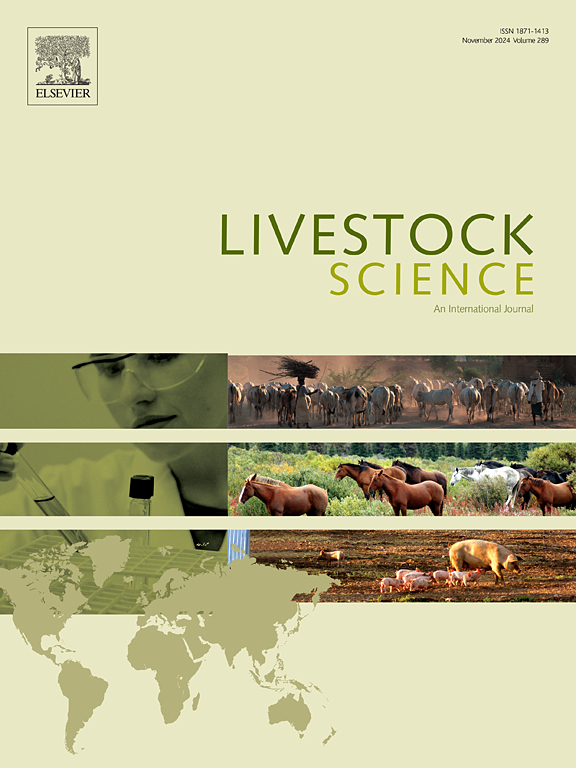The effect of social hierarchy on short-term group-housed sow gestation and reproductive performance
IF 1.8
3区 农林科学
Q2 AGRICULTURE, DAIRY & ANIMAL SCIENCE
引用次数: 0
Abstract
The objective of this study was to determine whether group-housed sow social rank has an effect on sow gestation and reproductive performance. Forty-nine sows with previous group housing experience were enrolled in the study, housed in 1 of 3 pens over five repetitions, and allocated to 1 of 4 social hierarchy rank quartiles (RQ) based on their aggressive interactions immediately after weaning and reintroduction to group housing. Sows in RQ1 were ranked highest within the group, followed by RQ2, RQ3, and RQ4 sows, who were ranked lowest within the group. All sows were confirmed pregnant and underwent body condition scoring (BCS) and backfat depth (BF) measurement on experimental d -7 (before gestation group housing), 15, 30, 45, 60, 75, 90, and 105 of gestation. Following the gestation period, farrowing, nursing period, and weaning performance were measured for each of the enrolled sows. Rank quartile had no effect on BCS or BF (P > 0.05). There tended (P = 0.08) to be an effect of RQ on the number of mummies produced, with RQ4 sows producing a greater number of mummies compared to RQ1 (P = 0.02), RQ2 (P = 0.04), and RQ3 (P = 0.03) sows. No other effects of RQ were observed for farrowing, nursing period, or weaning performance (P > 0.05). Taken together, these results indicate that RQ (at least in the short term) has little effect on gestational and reproductive performance of sows housed in groups during gestation.
社会等级对短期群居母猪妊娠和繁殖性能的影响
本研究旨在确定群居母猪的社会等级是否会影响母猪的妊娠和繁殖性能。49头曾有群居经验的母猪被纳入研究,在3个猪栏中的1个中饲养5次,并根据其断奶后的攻击性互动被分配到4个社会等级四分位数(RQ)中的1个。RQ1 母猪在组内排名最高,其次是 RQ2、RQ3 和 RQ4 母猪,它们在组内排名最低。所有母猪均已确认怀孕,并在实验第 7 天(妊娠分组饲养前)、妊娠第 15、30、45、60、75、90 和 105 天进行了体况评分(BCS)和背膘深度(BF)测量。妊娠期结束后,对每头参试母猪的产仔、哺乳期和断奶性能进行了测定。等级四分位数对BCS或BF没有影响(P > 0.05)。与 RQ1(P = 0.02)、RQ2(P = 0.04)和 RQ3(P = 0.03)相比,RQ4 母猪生产的木乃伊数量更多。没有观察到 RQ 对产仔、哺乳期或断奶性能的其他影响(P > 0.05)。综上所述,这些结果表明,RQ(至少在短期内)对妊娠期群养母猪的妊娠和繁殖性能影响甚微。
本文章由计算机程序翻译,如有差异,请以英文原文为准。
求助全文
约1分钟内获得全文
求助全文
来源期刊

Livestock Science
农林科学-奶制品与动物科学
CiteScore
4.30
自引率
5.60%
发文量
237
审稿时长
3 months
期刊介绍:
Livestock Science promotes the sound development of the livestock sector by publishing original, peer-reviewed research and review articles covering all aspects of this broad field. The journal welcomes submissions on the avant-garde areas of animal genetics, breeding, growth, reproduction, nutrition, physiology, and behaviour in addition to genetic resources, welfare, ethics, health, management and production systems. The high-quality content of this journal reflects the truly international nature of this broad area of research.
 求助内容:
求助内容: 应助结果提醒方式:
应助结果提醒方式:


